James Charles: The making and ‘cancelling’ of a YouTube superstar
Earlier this year, the beauty vlogger set a record for losing over 1 million subscribers in less than a day. But has the rise and fall and rise again of James Charles turned the tide on influencer culture, asks Sirena Bergman, or shone a light on how much we love watching celebrities fall from grace?

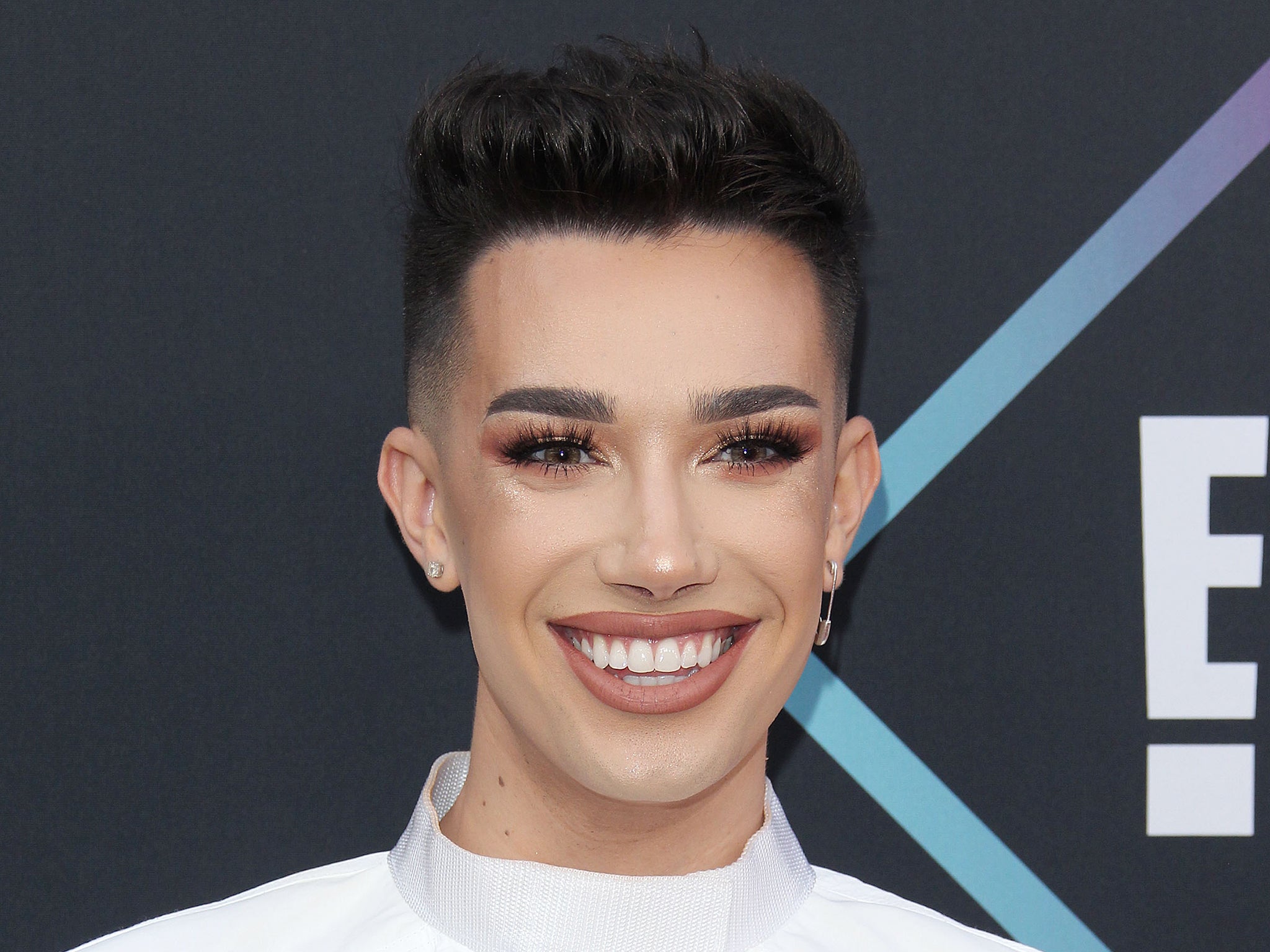
Last month, Time magazine released its list of the 25 most influential people on the internet. Nestled among politicians, royals and activists of household-name status are hugely popular YouTubers many may not have heard of. The endlessly relatable Emma Chamberlain, with over 8 million subscribers, features. As does 16-year-old tween sensation and former Dance Moms star JoJo Siwa, with almost 10 million followers.
And then you come to the name James Charles, who up until this spring was relatively unknown to the masses, despite more than 16 million people subscribing to his YouTube channel. Like many influencers, he existed in a curious celebrity middle-ground, where despite being mobbed by thousands of adoring fans, the traditional media pretty much completely ignored him. But all that changed on 10 May, when fellow YouTuber and former friend Tati Westbrook uploaded a 43-minute video which can broadly be described as a character assassination of Charles, kickstarting what would become one of the most talked-about, consequential feuds in influencer history.
The making of James Charles
To understand the monumental cultural impact of the dispute, we must go back to 5 September 2016, when a relatively unknown 17-year-old James Charles Dickinson, who had built up a modest following by filming make-up tutorials on YouTube for under a year, tweeted his senior yearbook picture. He explained that he’d had the photos retaken with his ringlight “so my highlight would be poppin” because he loves “being extra”.
The photo went viral and racked up more than 33,000 retweets and 84,000 likes on Twitter within just a day, including a retweet from then 20-year-old actor and singer Zendaya. By the following month he’d amassed more than 440,000 Instagram followers and was announced as the first male ambassador for US make-up brand CoverGirl. It was widely acknowledged as a pivotal moment for LGBT+ inclusivity and the beauty industry abandoning the gender stereotyping which it had been propagating for decades.
Such was the impact of Charles’s story that he was invited on The Ellen DeGeneres Show to talk to the LGBT+ icon about his story. He appeared in a full face of make-up, discussing his sudden rise to internet fame, coming out as gay aged 12, becoming interested in make-up and growing up on social media. Born in 1999, he was only five years old when Facebook was founded, seven when Twitter launched, and 11 when the first version of Instagram was released.
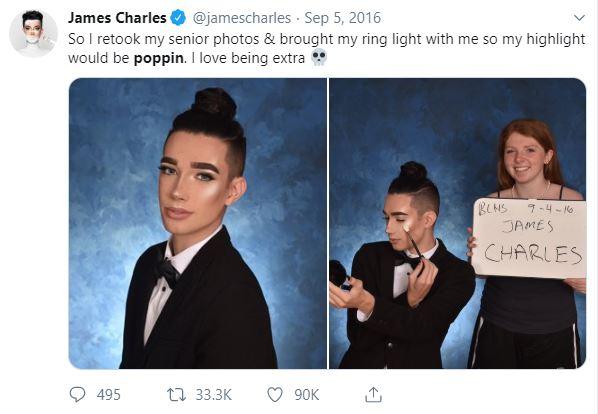
His viral fame became emblematic of a generation of creators and celebrities whose careers took off on social media. Musician Billie Eilish, who was born in 2001, has achieved worldwide fame after the huge success of her single “Ocean Eyes”, which she posted on SoundCloud. Fellow singer Lil Nas X broke records this year when, aged 19, his song “Old Town Road” became the longest-running hip-hop track on the Billboard Hot 100 after going viral on the video-sharing app TikTok. YouTuber Tana Mongeau found herself on real-life billboards all over LA this year after landing an MTV reality show based on the run-up to her 21st birthday. But Charles’s sudden fame landed him in a wholly different world.
The top tier of beauty YouTubers is a place of fame, wealth and tremendous influence, punctuated by collaborations with the likes of Kim Kardashian, partnerships with behemoths of the make-up industry and incestuous, cliquey friendship groups that result in feuds and dramas that are all closely covered by commentary channels on YouTube, which are watched by millions.
Charles’s meteoric rise to the top of this exclusive club has been uniquely defined by seemingly endless scandals. In February 2017 he was forced to apologise after a tweet in which he joked about getting Ebola while on a school trip to Africa. Just a few months later, fellow beauty influencer Thomas Halbert posted screenshots of conversations which seemed to discredit the ringlight story that led to Charles’s fame, suggesting he actually photoshopped his “poppin” highlight. In April 2019 he caught flak yet again after saying in a video that he was not “full gay” because he had been “into” trans guys, suggesting that they did not count as men for the purpose of identifying his sexuality.
The following month he was widely ridiculed for posting on Instagram that his invitation to the Met Gala was “a step in the right direction for influencer representation in the media” and that he was glad to be the “catalyst”.
While his comments were somewhat tone-deaf and self-aggrandising as someone with such huge privilege, it’s true that the media and fashion industry tend to ignore social media influencers in favour of covering more traditional celebrities, leading to a disconnect between the reality of their huge impact and lack of awareness among the masses.
This was epitomised in January when Charles made an appearance at a shopping centre in Birmingham and thousands of fans brought the city centre to a standstill, much to the surprise of officials who clearly failed to understand the scope of his influence and plan accordingly.
Charles’s wish to be acknowledged by the mainstream would soon be granted, but in a cruel twist of fate it would not be for his success, but for the projected death of his career.
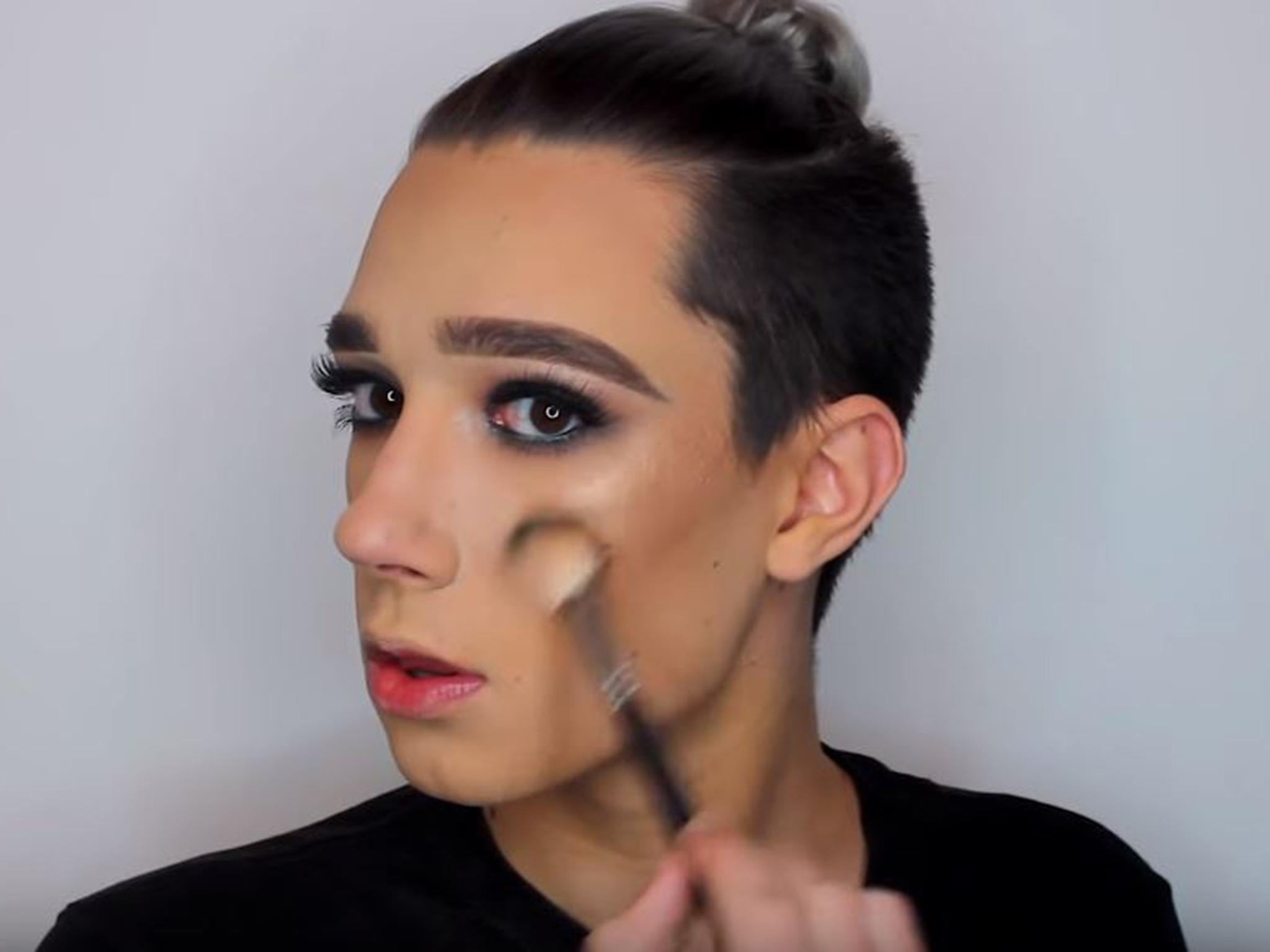
The cancelling of James Charles
Tati Westbrook is a 37-year-old beauty YouTuber. She has been on the platform since 2010, and for much of that time was posting five videos a week, mostly focusing on product reviews and tutorials. Over almost a decade, she amassed more than 6 million subscribers and is widely respected on the platform for her perceived authenticity (unlike most influencers, she rarely accepts brand sponsorships) and ability to stay out of the drama despite her public friendships with controversial figures such as Jeffree Star. Newsweek referred to her as “a progenitor of YouTube’s beauty scene” and indeed that is how she was broadly perceived among the community.
So people were inclined to not only listen, but also blindly believe her allegations when she posted her now-infamous 43-minute video entitled “Bye Sister” – the title being a reference to Charles’s trademark term for his subscribers (“Hi sisters!”), his friends (“I’m doing a collaboration with sister Jeffree Star!”), and pretty much any word in his vocabulary (he’s going to put on a “sister winged liner”, his day is “sister stressful”, he gives people he likes a “sister shoutout”).
Westbrook’s video (which has since been deleted) was ostensibly triggered by Charles accepting a sponsorship from vitamin supplement brand Sugar Bear Hair (SBH), which many – including Westbrook – saw as a betrayal of their friendship given the company is the main competitor to her supplement business Halo Beauty.
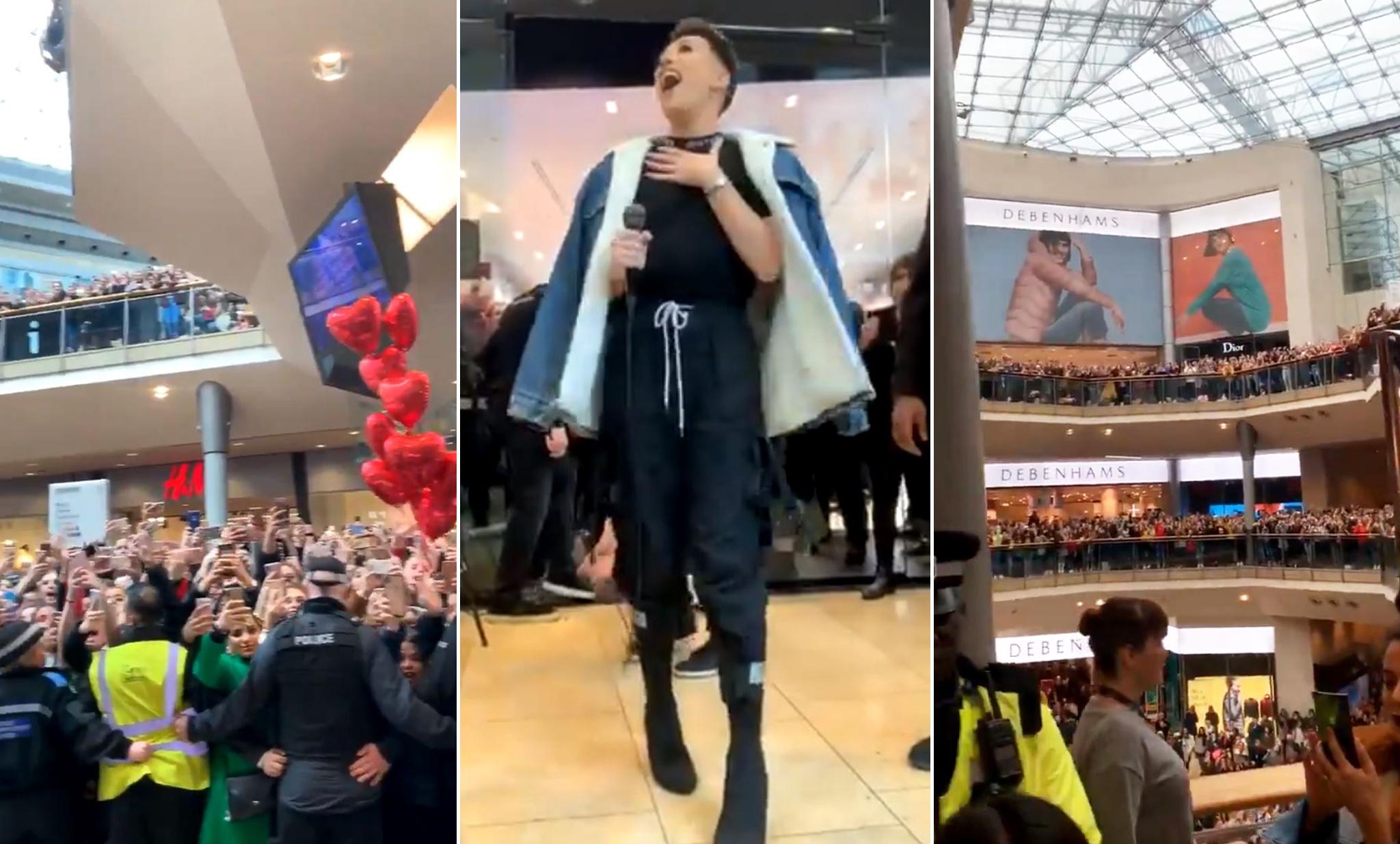
Her response was, by most measures, brutal. It detailed how much she and her husband had done for Charles, acting as parents to the teenager, offering business and personal advice, helping him gain popularity and sponsorships, taking him under their wing. She discredited his story that he had to take the partnership with SBH because the brand had saved him from being mobbed at Coachella, and criticised him for promoting supplements to a young audience. She also made allegations of sexual misconduct, claiming Charles systematically tried to “convince straight men that they were gay” and was consistently inappropriate and coercive around men who were not interested in him.
Posting the video was a risky move by Westbrook, who throughout it emphasised how much she “still cared” about her former friend. She has since stated that she had no idea how drastic the reaction would be, despite the loyalty of Charles’s audience, which was much larger than hers.
It’s hard to imagine that anyone could have predicted what happened next – the video received millions of views, was on YouTube’s trending page, and subscribers started flocking away from Charles and towards Westbrook at record-breaking speed.
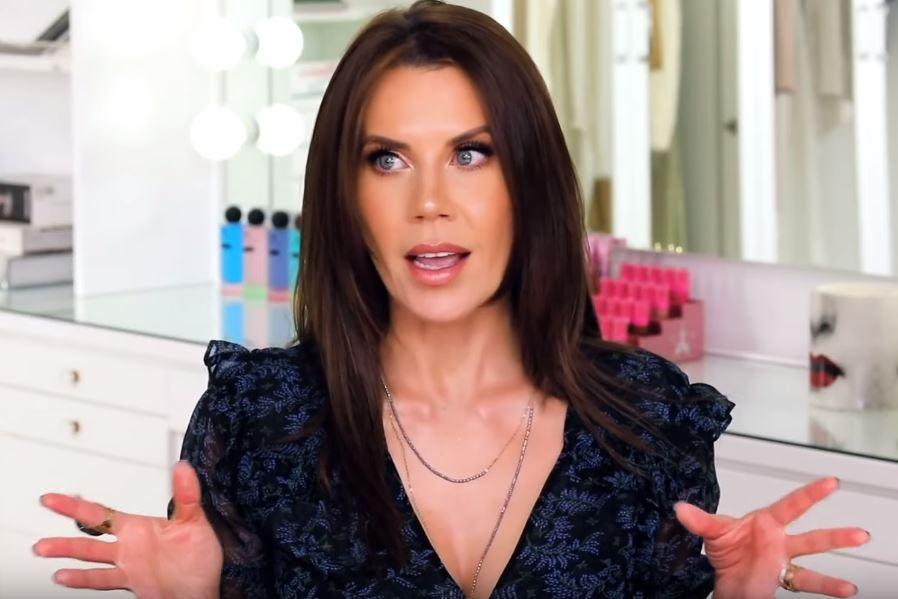
Within a day he had lost 1 million subscribers – something that had never before occurred in the 14-year history of YouTube – Westbrook was simultaneously gaining hundreds of thousands of subscribers at lighting speed.
This mass exodus continued for days and the feud was covered across media outlets. Charles posted a teary apology video and other high-profile figures weighed in, including comments from huge influencers including Manny MUA in defence of Charles, and Jeffree Star backing Westbrook. Within days the race was on to see who would hit 10 million subscribers first – Charles, who began at 16 million, or Westbrook, who just days before was at 6 million.
The story became a global talking point. People who had never watched a make-up tutorial in their lives were weighing in, and Charles was largely declared “cancelled”.
Herd mentality and social media mob rule
The YouTube community has been mired in scandals for years. Last summer a wave of top-tier influencers (with Star at the centre of it) were called out for inappropriate content and behaviour; Logan Paul, with 15 million subscribers, vlogged the dead body of a suicide victim for a video; his brother Jake Paul (19 million subscribers) posted a video in which his YouTube nemesis FaZe Banks was falsely accused of assault; Tana Mongeau (4.7 million subscribers) hosted a convention so disastrously organised that it left fans waiting outside for hours in blistering sun with no food or water; creators including Shane Dawson (22 million subscribers) and Philip DeFranco (6.4 million subscribers) were accused of exploiting their followers’ mental health concerns for money after promoting the controversial BetterHelp app. Yet none of these situations came close to creating the kind of backlash Charles experienced.
Hollie-Anne Brooks is a journalist and former editor of We The Unicorns, a digital publication that covers YouTuber news. She thinks that while Westbrook’s video kickstarted the backlash against Charles, it snowballed into a collective desire to be involved in the drama, which led many to follow in the footsteps of his first critics without questioning the reasons for doing so.
“There were a lot of people who enjoyed getting caught up in the #JamesCharlesIsCancelled movement and it felt like you were part of a group,” she says.
Katie Woodland is a psychologist who now works as a business coach, but her background is in child development. She believes that part of the reason for the extreme response to the scandal is the age of the subscribers involved.
“When you’re a teenager you’re desperately looking for an identity and a tribe. Initially James Charles spoke to that need, being an outsider himself,” says Woodland. “The cliques and groups we pick as teenagers are part of us trying to work out where we belong and as soon as we align with someone, we feel they are an extension of our identity, but if they say or do something we feel doesn’t align with our world view, teenagers can feel truly betrayed, and want to hurt them back.”
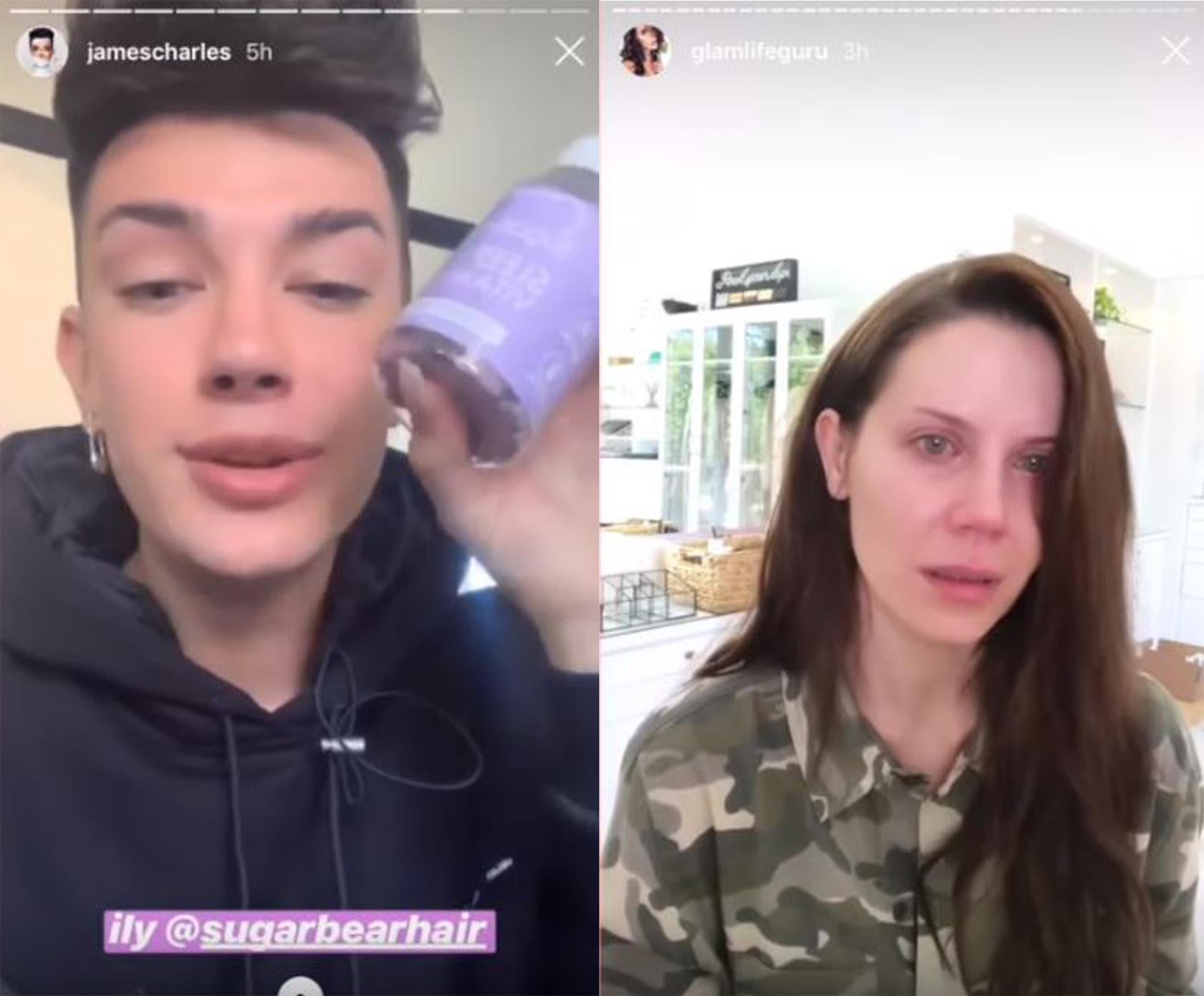
Woodland explains that due to the increased exposure to influencers’ day-to-day lives, younger generations can feel that they are within their orbit, compared to the more removed sense of fandom for traditional celebrities. As a result, the reaction can be as intense as if you were to fall out with a friend. Followers may also feel a connection to Westbrook, so by claiming Charles betrayed her, her younger viewers could empathise so deeply that they took Charles’s alleged actions personally.
Research bears this out, showing that the brain isn’t fully developed until around age 25. According to the University of Rochester Medical Centre, adults think with the prefrontal cortex, the brain’s rational part. This is the region of the brain that responds to situations with good judgment and an awareness of long-term consequences. Whereas teens process information with the amygdala, which governs emotions. As a result, young people are more likely to succumb to a “herd mentality”.
Nicola Morgan is a psychologist who has spent decades researching the teenage brain. In her book The Teenage Guide to Friends, she writes that this phenomenon can lead to problematic behaviours. “Groups (including groups of adults) often react and behave emotionally, without thinking. The individuals may hardly register that they’ve hurt anyone by their laughter, exclusion or thoughtless comments.”
She also writes that social media can exacerbate this behaviour in people of all ages “because of the ‘online disinhibition effect’, which describes how people often behave online in a way they wouldn’t do face-to-face. Group behaviour on social media causes problems for adults, too, as people of any age can behave badly, be cruel and have poor self-control.”
Jon Ronson is the author of So You’ve Been Publicly Shamed, which chronicles the cases of various individuals who have been subject to mass social media abuse in response to a misguided tweet or Facebook post. Speaking to ABC News Australia in 2015 he said: “I think [Twitter] has gone from a place of curiosity and empathy to a place of cold hard instant judgement on the scantest evidence.”
He argues that part of the reason people feel comfortable “ganging up” on someone on social media is that it has become a comfortable echochamber for our own opinions. “Twitter’s like a sort of mutual approval machine,” he says. “Tech utopians call this a new type of democracy but it’s the opposite. In a democracy, you listen to each other.”
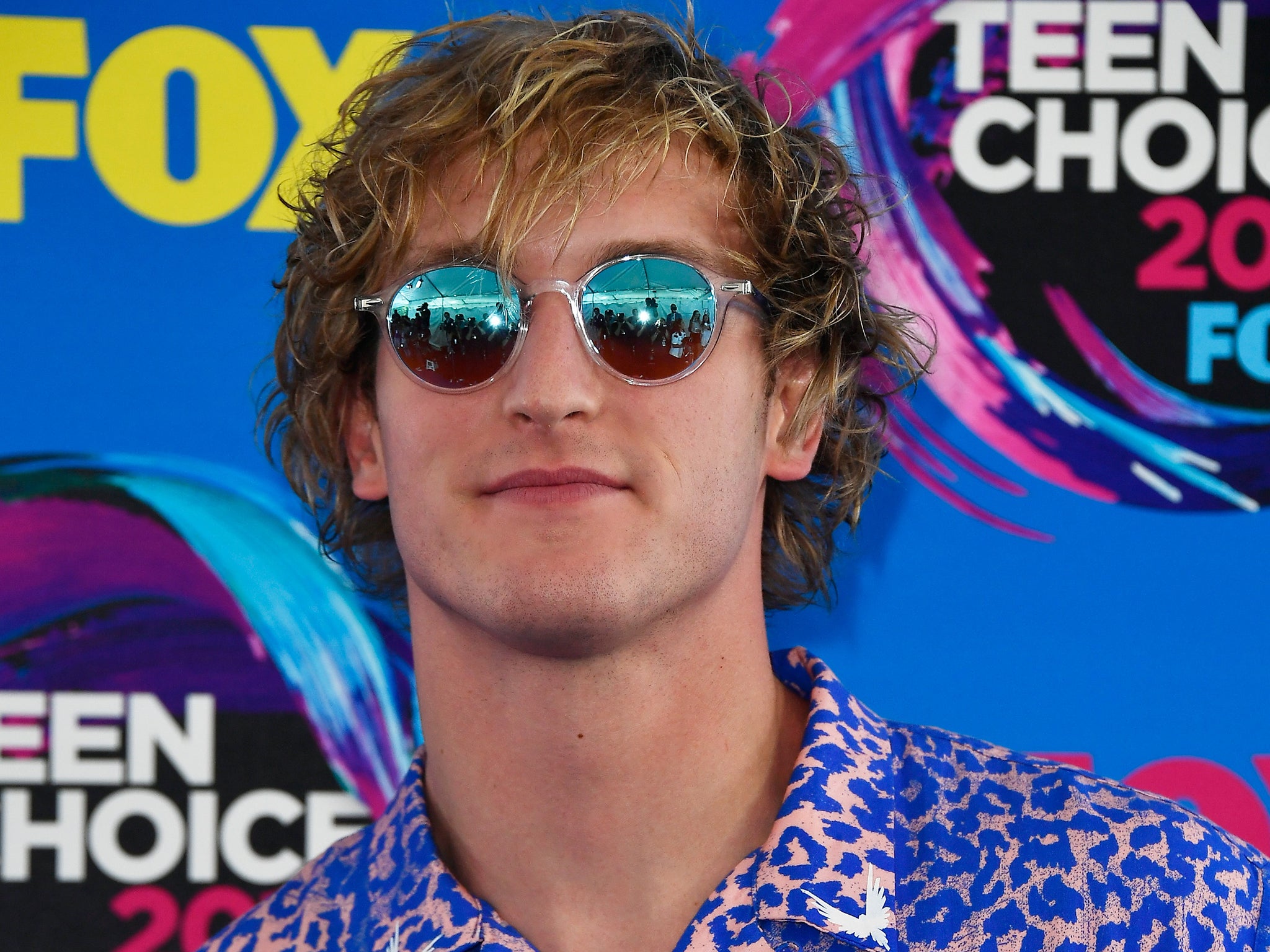
The desire to surround ourselves by people who validate our views existed long before social media, but platforms like YouTube, Twitter and Instagram certainly exacerbate it. Writing in Psychology Today, moral psychologist Rob Henderson states that: “There is a heuristic most of us use to determine what to do, think, say, and buy: the principle of social proof. To learn what is correct, we look at what other people are doing.”
The impulse to be part of a vindicated group – in this case, the people “cancelling” James Charles – is compounded by the unparalleled visibility of the sentiment. Social media analytics site Social Blade was live-streaming the subscriber differential for Charles and Westbrook, allowing viewers to watch Charles’s fall from grace in real time, and contributing to a collective mentality which lacked awareness of the potential nuance in the feud
Brooks says that watching Charles’s subscriber count go down was “a meme and a moment on social media in itself”.
With mainstream outlets including the BBC, CNN, Sky News, The New York Times, The Washington Post and The Atlantic covering a YouTube story for the first time, the herd was endorsed more than ever and the echochamber became even louder.
The complexities of sexual impropriety allegations
It’s impossible to separate the reaction to Westbrook’s video from the allegations themselves. While the accusations of treachery and entitlement may have riled viewers on an emotional level, the reaction to her claim that Charles was pressuring men into sexual contact elicited a more complex response.
It would be naive to say that the Me Too movement has completely changed society’s view on sexual assault and harassment, but it is fair to suggest that in cases where accusations are made, the morally correct response is broadly understood to be: believe the victim. But we forget that the allegations against Charles did not come from a victim, but from a former friend who – by her own admission – was a bystander in more than one of these apparent instances. Further, the power differential in the allegations against Charles isn’t as straightforward as that of Harvey Weinstein, for example – allegations of a straight, white, male multimillionaire Hollywood producer coercing young unknown female actors into sexual acts under the understanding that their refusal would end their careers.
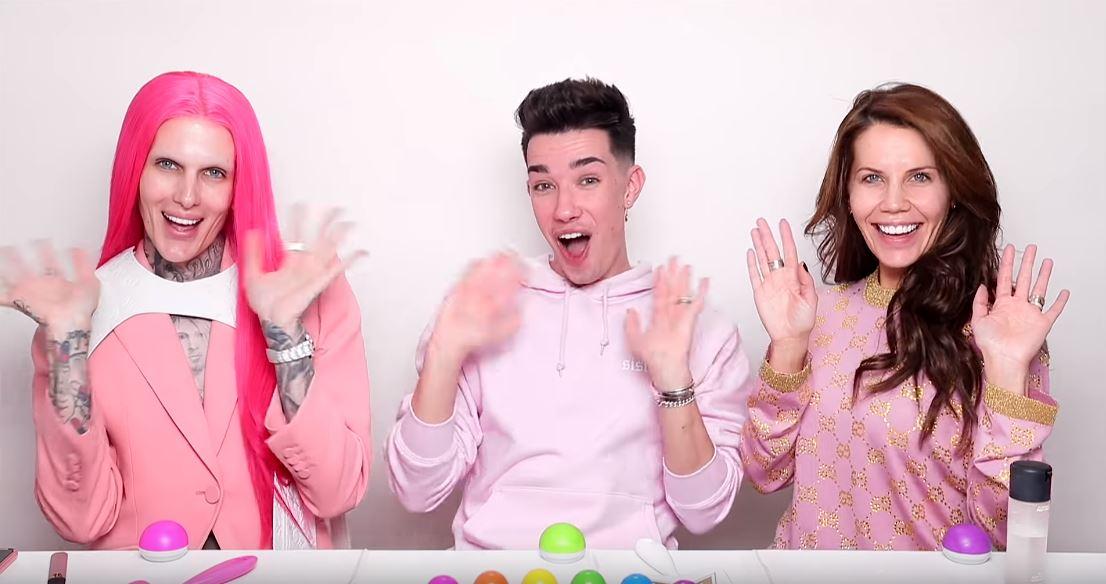
In an episode of Radio 4’s Late Night Woman’s Hour, host Emma Barnett discussed the situation at the time with beauty journalist Sali Hughes and writer and broadcaster Miranda Sawyer. Hughes, who admits she didn’t know who James Charles was until that week, points out that he is “this barely-an-adult, young gay man in make-up – which is a hard thing to be in society”.
When discussing the sexual harassment allegations, which largely centre around Charles aggressively pursuing men he knew to be straight, Sawyer says: “People get hit on all the time, ask any woman. It’s just ludicrous. He’s 19, if he sends a [direct message on social media] to a 30-year-old straight guy saying ‘you’re fit’ I mean really – lucky you. I think that mainstream America is incredibly homophobic, and they’re running scared of the idea – it’s so 1970s – that ‘a gay guy can turn you gay’.”
Of course, Charles does have a huge following, wealth, and stature in the community, so it’s not unfeasible that he could have wielded the power to pressure men into sex, but the narrative around the discussion at the time seemed to ignore the reality that there is a big difference between a heterosexual man pressuring a woman into sex, and a young gay man doing the same to straight men.
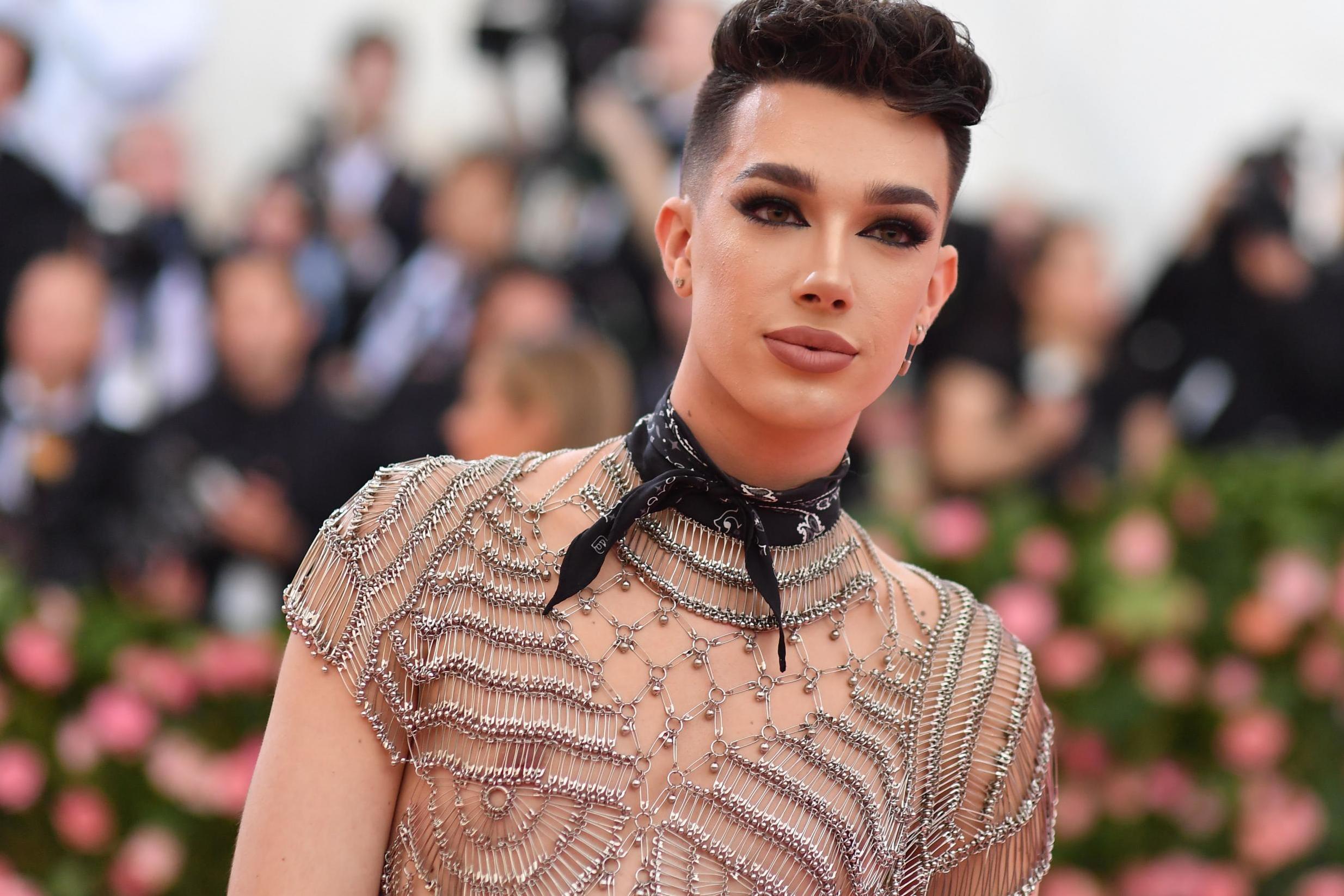
The double-edged sword of overnight fame
Herd mentality and cancel culture do not lead to thoughtful analysis of a situation, but rather to a distilled version of a story which people will blindly latch onto to validate their own beliefs, and a pervasive one is that influencers largely do not deserve the acclaim and success they achieve.
They are seen as narcissistic and entitled. People who manage to make a living just by being young and charismatic. This sense of unfairness around their success is amplified in cases like that of Charles, whose sudden rise to internet fame was not necessarily unique, but the scope of his influence and the lightning speed with which he achieved it is unparalleled.
By May 2019 – just over two and a half years after the ringlight photo – Charles had 16.6 million subscribers on YouTube, putting him in an elite category of beauty influencers alongside Rachel Claire Levin (14 million subscribers), who began posting YouTube videos in 2010; Jeffree Star (15 million subscribers), whose audience has been growing since the mid-2000s when he was one of the most popular pages on MySpace; NikkieTutorials (12 million subscribers), who’s been posting on YouTube since 2010; and Safiya Nygaard, who rose to prominence when she made videos for BuzzFeed in 2015. Charles’s overnight success stood in huge contrast to the reality of “making it” as an influencer, which typically involves years of hard graft and steady growth.
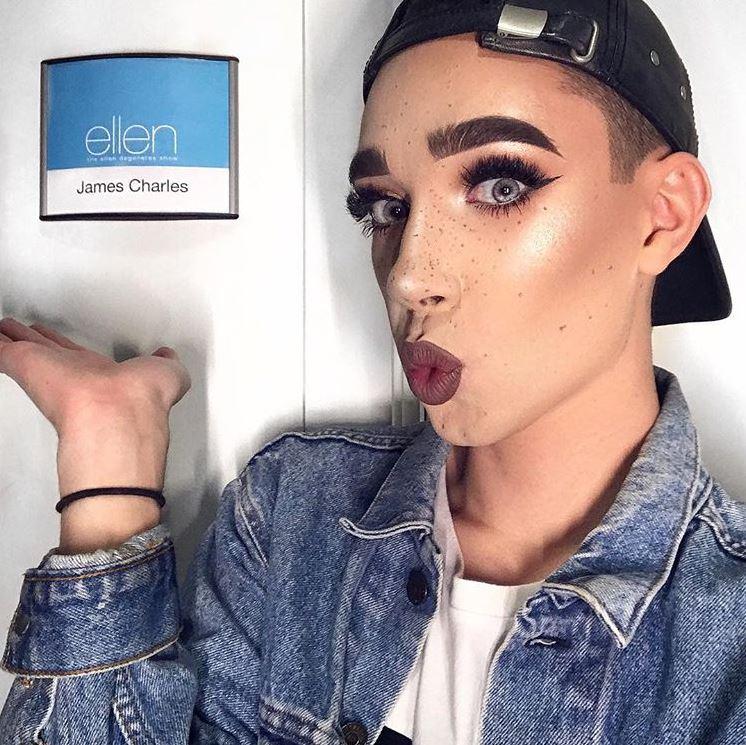
Brooks believes his fast rise to fame may have been a key factor in the collective desire to take him down. “A lot of YouTubers – including Tati Westbrook – started at a time when the industry and the community wasn’t so fickle. James’s very quick rise to fame in a way gives way to his downfall.”
She explains that while YouTubers who have been on the platform for a decade have a dedicated, loyal audience, the new wave of followers who have latched onto Charles recently have not developed the long-term allegiance to him, and know they have hundreds of others creators out there whose content they can consume instead.
Influencer and author Emily Clarkson wrote about the scandal as it was unfolding. On her blog, Pretty Normal Me, she wrote that James Charles was “a victim of his own success”.
“For months and years he has been treated like a god, been made allowances for, had his bad behaviour excused because of his celebrity status. In turn, he got swept up in himself and his life and his wealth and his fame. He lost his sense of everything important and he fucked up. And now he’s paying the price. He is a victim of his own success, of an industry that builds people to extraordinary levels. And one that tears them down at a moment’s notice too,” she said at the time.
It’s impossible not to see the parallels between Charles – someone who achieved giddy heights of recognition at such a young age – and the schadenfreude with which society has always consumed stories of young celebrities falling from grace.
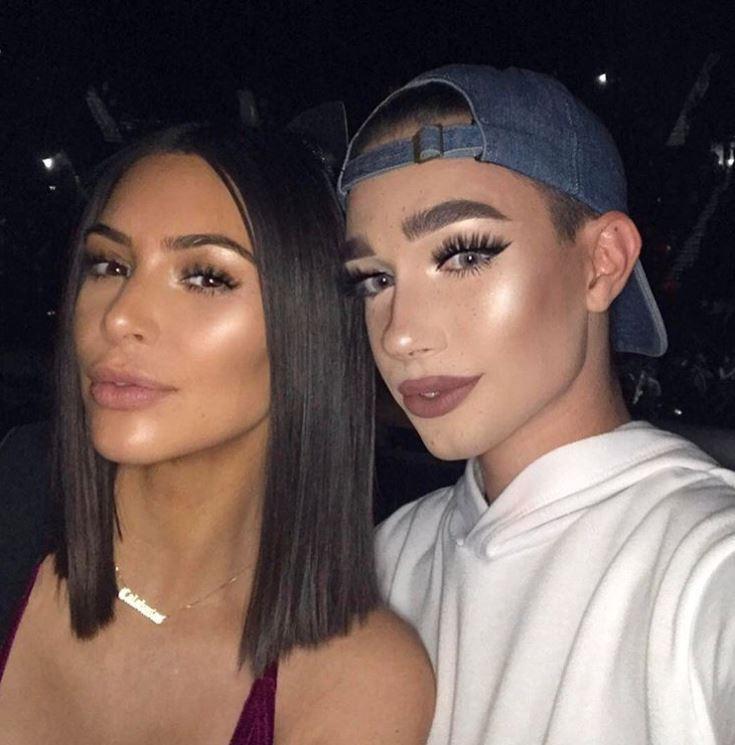
In an article examining the fallout from Britney Spears’s notorious breakdown in 2007, author Kate Leaver writes: “It was us, after all, who destroyed her. She didn’t crumble in isolation or simply of her own volition; she overdosed on fame and we were complicit in that. We made her the single most watched human being on the planet and then, gleefully, watched as she nearly died from overexposure. We celebrated her ascent to celebrity and then punished her for attaining the very perfection we demand.”
We can see this unflattering trait of society in the way we’ve revelled in the demise of countless other young celebrities – Lindsay Lohan, Amanda Bynes and Aaron Carter to name just a few. While Charles’s fame may be slightly more niche than his mainstream counterparts, he was by no means insulated from the cruel delight with which the people who built him up rushed to take him down.
The redemption
Charles made a fatal error in his handling of the situation – one which it seemed might cost him any chance of overcoming the mass exodus of his followers: he uploaded an apology video.
YouTube has seen so many apology videos that the concept has become a meme in and of itself. Earlier this year, images of a child who attended VidCon – the world’s biggest YouTuber convention – dressed as an apology video went viral. These videos are generally portrayed as unscripted and teary, with the influencer in question usually make-up free and wearing the strangely ubiquitous grey hoodie.
Writing about the “apology video genre” for Vice, journalist Bettina Makalintal says: “On YouTube, apologies … have become just another product. With high-profile stars always selling something, the apology video is a necessary step of damage control. And if the scandal blows up enough, the apology video can be a way of reeling in new viewers, too – plenty of people, I’m sure, hadn’t heard of Tati Westbrook or James Charles until explainers of their situation ended up everywhere.”
Indeed, Charles’s eight-minute now-deleted response video, somewhat gauchely titled “Tati”, did little but add fuel to the fire, and gave viewers further fodder to ridicule him. Grey hoodie-clad and make-up-free, he emphasised how distressed he was by the situation, and at one point rather bizarrely even spoke directly to his mother to apologise.
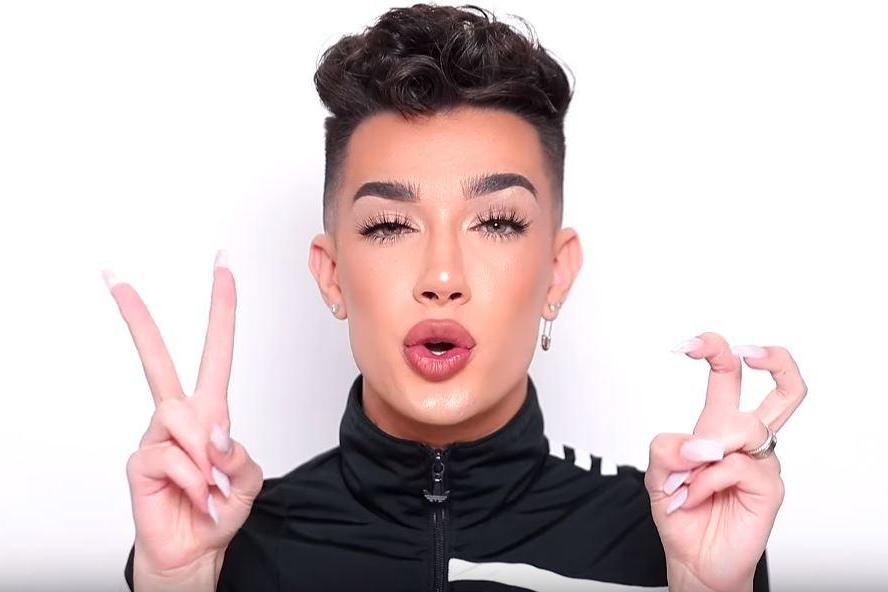
It seemed like it couldn’t get any worse for Charles, and people speculated that his career was over.
Then, on 18 May, just over a week after this all began, Charles came back with a vengeance in a second video about the scandal.
In flawless make-up and with a crisp white backdrop and not a tear in sight, Charles calmly and respectfully spent 41 minutes breaking down Westbrook’s allegations and – crucially – he provided “receipts” – evidence to back up his claims. Westbrook’s original “Bye Sister” video offered no such proof, and relied on the credibility of her personal brand to back her up. While this initially worked, now followers had questions. Suddenly, a second wave of criticism started to boil up on social media, this time towards Westbrook, who her followers began to feel was more calculated in her original video than they originally believed.
Charles quickly gained back more than a million subscribers, while Westbrook’s began to fall. At the time of writing, just over two months after it all began, Charles’s Social Blade is consistently green (meaning he’s gaining followers rather than losing them), and he stands at over 15.9 million subscribers – almost as many as he had before the fateful SBH sponsored post.
“James Charles turned himself around very quickly, and I thought it was very interesting to see how he handled it,” says Brooks. “A lot of people probably expected him to stay silent for a very long time – but for him, that would mean admitting guilt which he didn’t think he had – or to really hit back in this really extravagant, dramatic, almost bitchy way that we’re used to seeing James do.”
After his video was posted, both Westbrook and Star (who had been publicly lashing out against Charles and threatened to post a tell-all video “exposing” him) gracefully backed down, saying they would no longer be addressing any of the allegations.
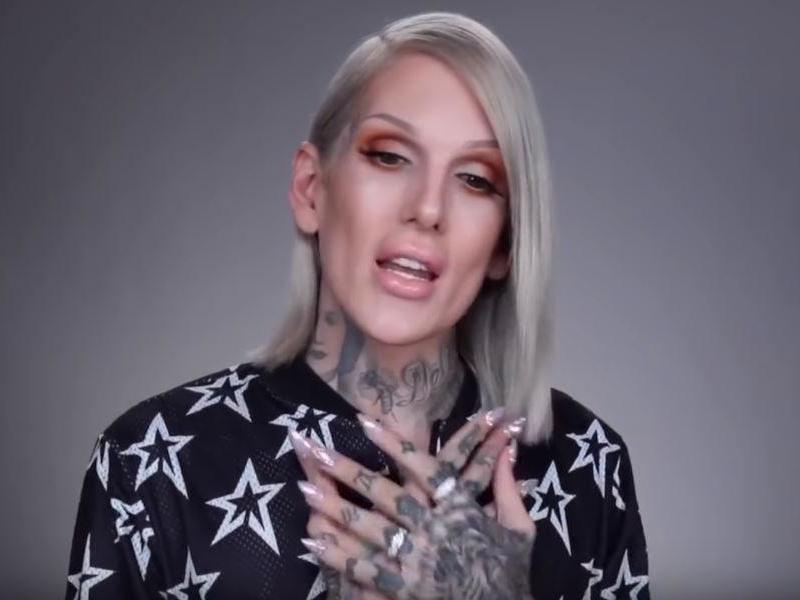
Within the subsequent couple of weeks most of the videos and tweets made by Westbrook and Star were quietly deleted, leading many to believe this was a carefully orchestrated – and highly successful – act of damage control involving lawyers.
The aftermath
That’s not to say Charles hasn’t lost out. His clothing brand Sisters Apparel, which was distributed by Star’s company Killer Merch, was conspicuously unavailable while this unfolded
He also had to cancel a series of live events entitled – you guessed it – Sisters Tour, at least in part due to the impact of the feud. It could also affect his chances of gaining brand sponsorships in the future – especially given his history of scandals – and there are still questions about the allegations of sexual misconduct made by Westbrook, as he is yet to respond directly. Although, he did “vehemently deny” the allegations made by Gage Gomez that he felt pressurised into sexual activity with the YouTuber when the pair attended Coachella together earlier this year.
But Westbrook hasn’t come out of this well either. Although her subscriber count sits at just under 10 million, her Social Blade is consistently red, meaning she’s losing subscribers on a daily basis. This makes sense – with the outrage at Charles all but gone, many people are back to subscribing based on content, rather than moral judgment, and many of Westbrook’s new followers who wanted to jump on the “cancel James Charles” bandwagon may not actually be fans of her video style. Meanwhile devoted followers may be rethinking their loyalty towards her as the motives behind her original video are called into question.
It’s hard to imagine another scandal hitting as hard or rippling as wide as this one. Users have perhaps learnt a lesson in the potential consequences of acting on impulse.
Brooks believes the debacle has changed the YouTube beauty industry. “Since the drama, we’re realising that we’re feeding into a bigger PR machine more than the audience perhaps realised,” she says.
She explains that while “authenticity” used to be the currency for YouTubers among audiences now in their late 20s who consumed this kind of content a decade ago, younger followers are looking more for the dramatic, soap-opera-esque escapism.
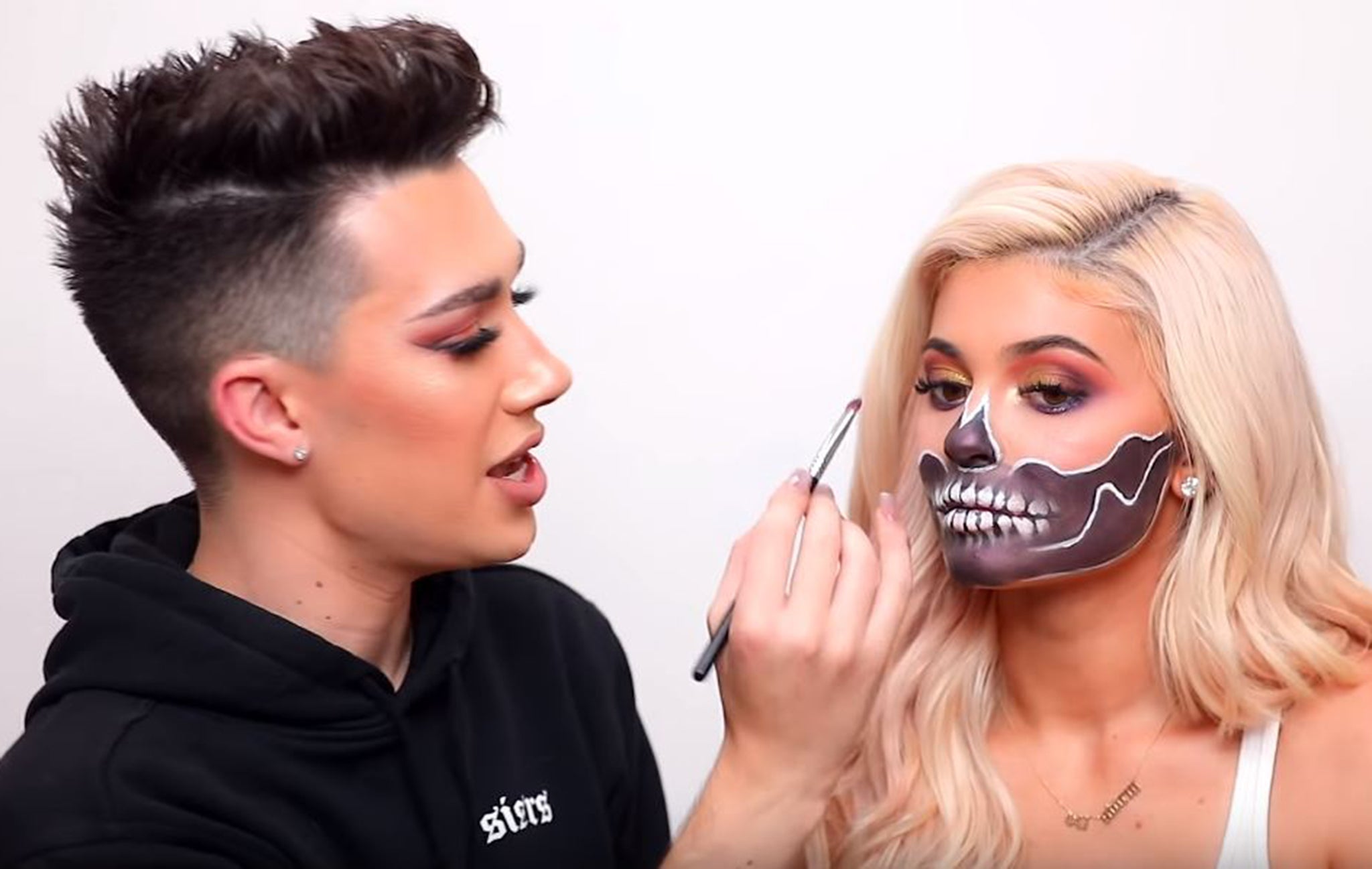
“We need to reestablish the balance because there is drama, and while that’s OK for some it’s not necessarily setting the best example or showing the beauty industry in the best light. We need to take a step back and look at the creators who aren’t all about the drama and the big flashiness, what they’re doing is be exceptionally talented – and push those people to the forefront.”
While the rise, fall, and rise again of James Charles is unlikely to end a culture of scandal and drama among the beauty YouTuber community, it may well be the catalyst for change in the way audiences react to it.
In June, YouTuber Jaclyn Hill (6 million subscribers) released a line of lipsticks which was met with disastrous feedback and allegations that they were expired or contaminated due to reports of plastic and metal shards embedded in the lipstick, holes and grittiness in the products and fluff and hairs in the formula.
For those eagerly awaiting the next YouTube scandal, this was it. It featured a notoriously controversial influencer, hundreds of thousands of angry consumers, conspiracy theories and endless commentary videos and input from other established YouTubers.
And yet while the backlash has been harsh, it has also been measured. Drama channels are treating the scandal with care, urging their viewers to be mindful of Hill’s mental health, and while she is losing subscribers, the numbers are in the hundreds, not the millions.
It’s hard to imagine her getting off so lightly had this occurred pre-James Charles, and that is surely a sign of a change in the tide of influencer backlash and cancel culture.
Join our commenting forum
Join thought-provoking conversations, follow other Independent readers and see their replies
Comments